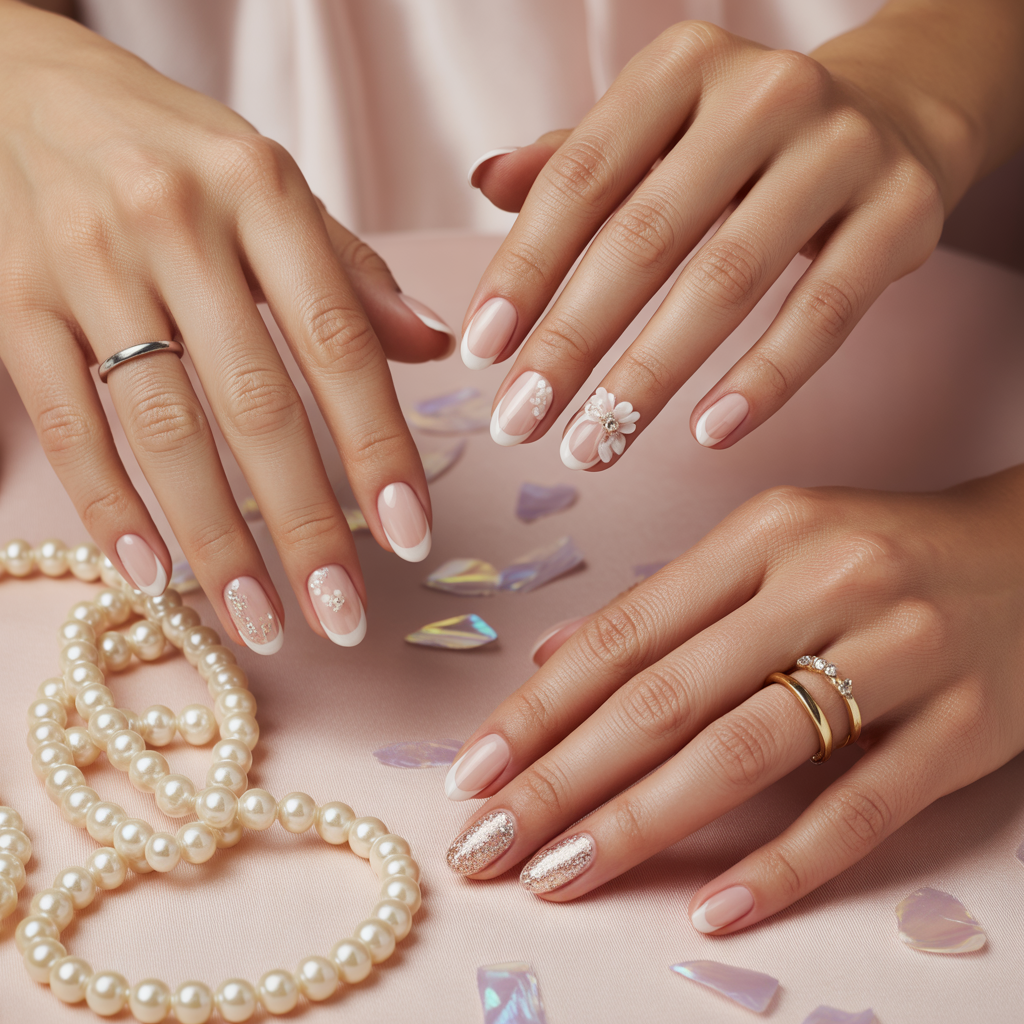Authentic 28 Italian Wedding Traditions You’ll Fall in Love With
Italian weddings carry centuries of customs, each reflecting family, faith, and festivity. Rooted in history yet alive in modern celebrations, these traditions bring a unique cultural rhythm to the union of two people. From village parades to symbolic rituals, every gesture holds meaning. Italian wedding traditions blend elegance, symbolism, and community — creating ceremonies that are as emotional as they are memorable. Weddings in Italy have long been communal events. Families gather, neighbors join in, and entire towns often witness the celebrations.
The Engagement Blessing

Before any official announcements, many families hold a private engagement blessing. Elders or a local priest offer their approval and prayers for the couple’s future. This is one of the earliest Italian wedding traditions that emphasizes the family’s involvement in every stage of the union. It turns an engagement into a formal commitment witnessed by loved ones.
The Wedding Announcement

In villages and small towns, couples once posted official wedding announcements on church doors or local notice boards. This public declaration invited everyone to celebrate. While modern couples might share the news on social media, the idea of formally announcing the union remains a proud moment in many Italian wedding traditions.
Choosing an Auspicious Wedding Date

In the past, couples carefully selected their wedding dates to align with good fortune. Fridays were avoided, as they were considered unlucky for marriages. Spring and early summer were popular for their symbolism of fertility and new beginnings. Following these beliefs remains an integral part of Italian wedding traditions, as couples aim to bless their union with good luck from the start.
The Bridal Trousseau

A trousseau, or “corredo,” consists of linens, embroidered sheets, and handmade items the bride brings to her new home. Mothers and grandmothers often spend years preparing it. The collection showcases the family’s heritage and craft. This treasured part of Italian wedding traditions celebrates domestic preparation and pride in family workmanship.
The Wedding Dress
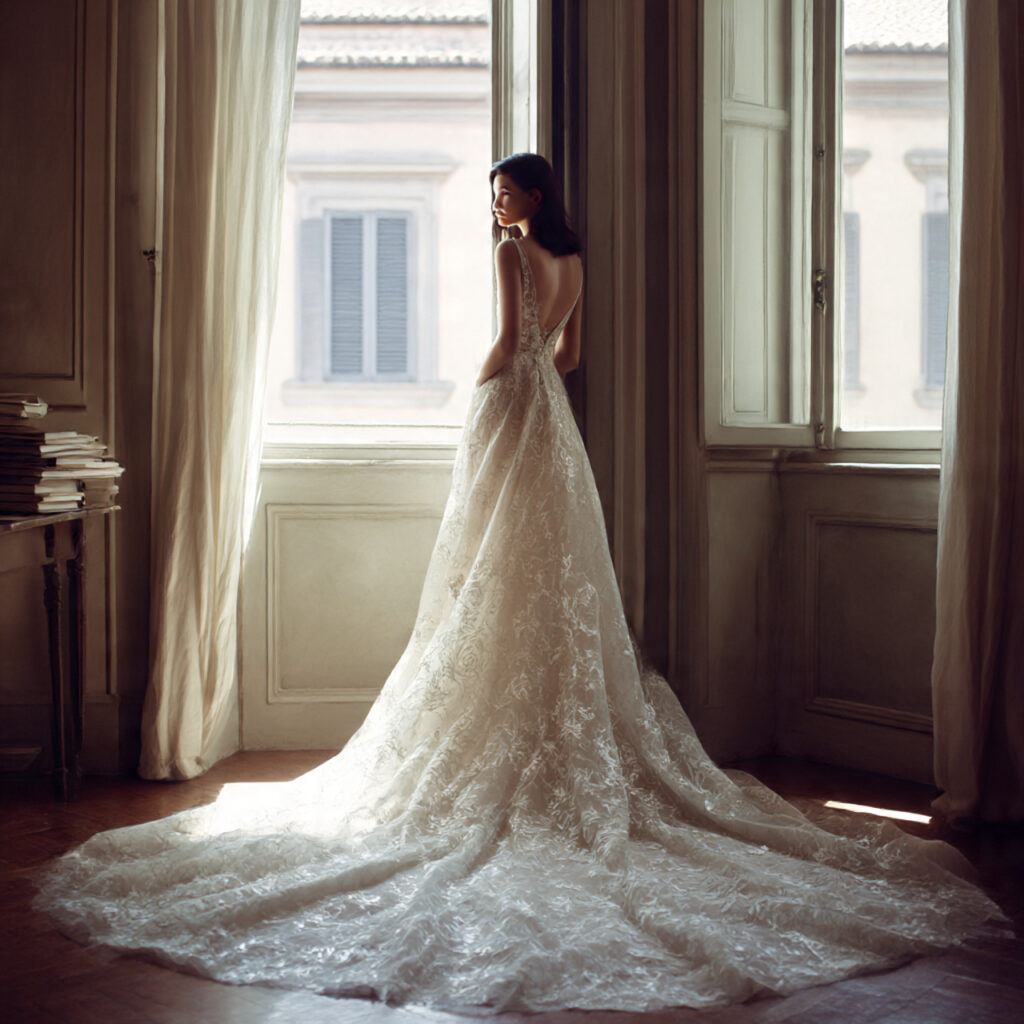
White wedding dresses became common in Italy after Queen Margherita popularized the style in the 19th century. Before then, brides often wore black or dark dresses with lace veils. Today, Italian brides embrace classic elegance — lace detailing, long trains, and fine fabrics. This blend of history and modern fashion reflects how Italian wedding traditions evolve while honoring their roots.
The Groom’s Morning Ritual

On the wedding day, the groom traditionally spends the morning surrounded by male relatives and friends. They help him get ready, offer advice, and share a toast. In some regions, musicians play outside his home to mark the start of festivities. This moment symbolizes male camaraderie and the groom’s transition, a meaningful element in Italian wedding traditions.
The Bridal Procession

In many rural areas, brides once walked to the church accompanied by musicians and family members. Neighbors would come out to watch, bless, and sometimes throw flower petals. This public procession remains one of the most picturesque Italian wedding traditions, symbolizing the bride’s journey from her family home to married life.
Tying a Ribbon Across the Church Door
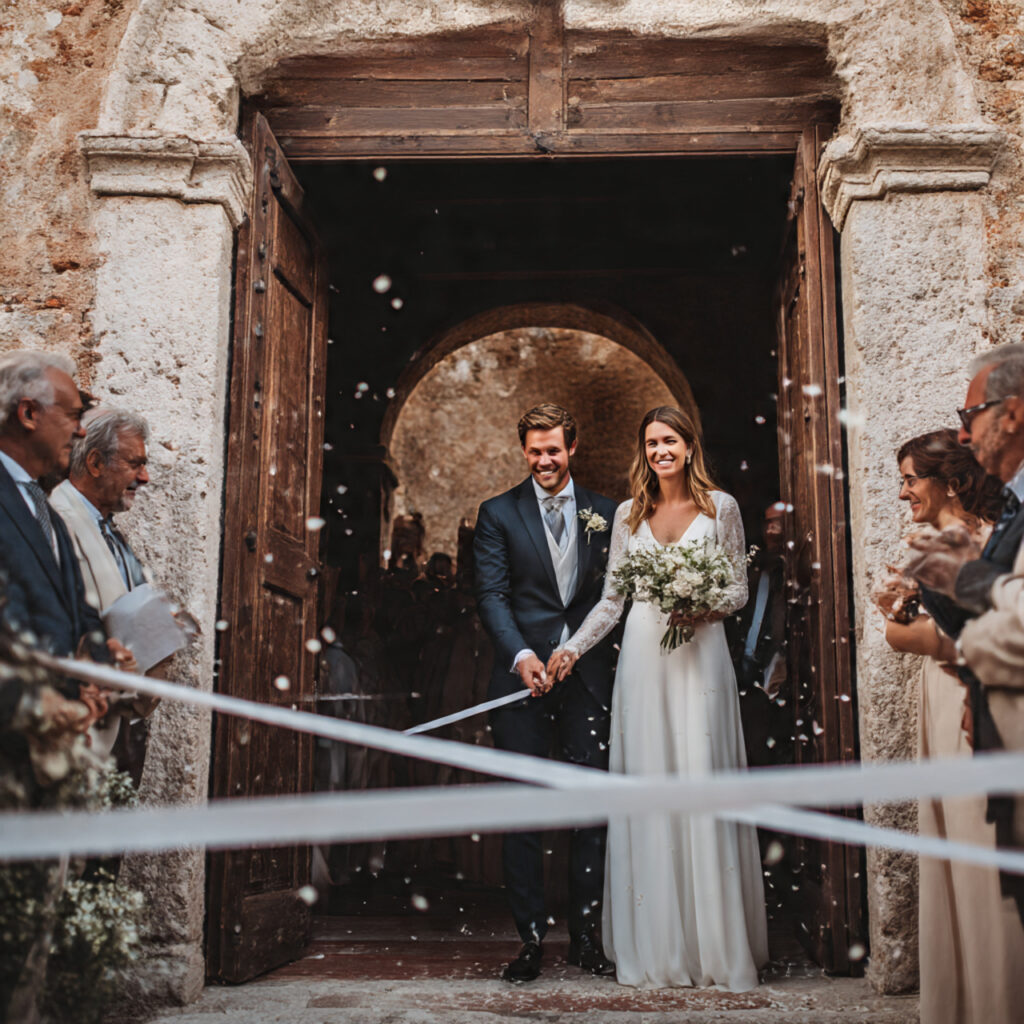
A white ribbon stretched across the church entrance marks the threshold between single and married life. The groom cuts it before entering, symbolizing the couple’s readiness to begin their life together. This symbolic gesture is small but powerful in Italian wedding traditions, linking ceremony with meaning.
Rice Throwing
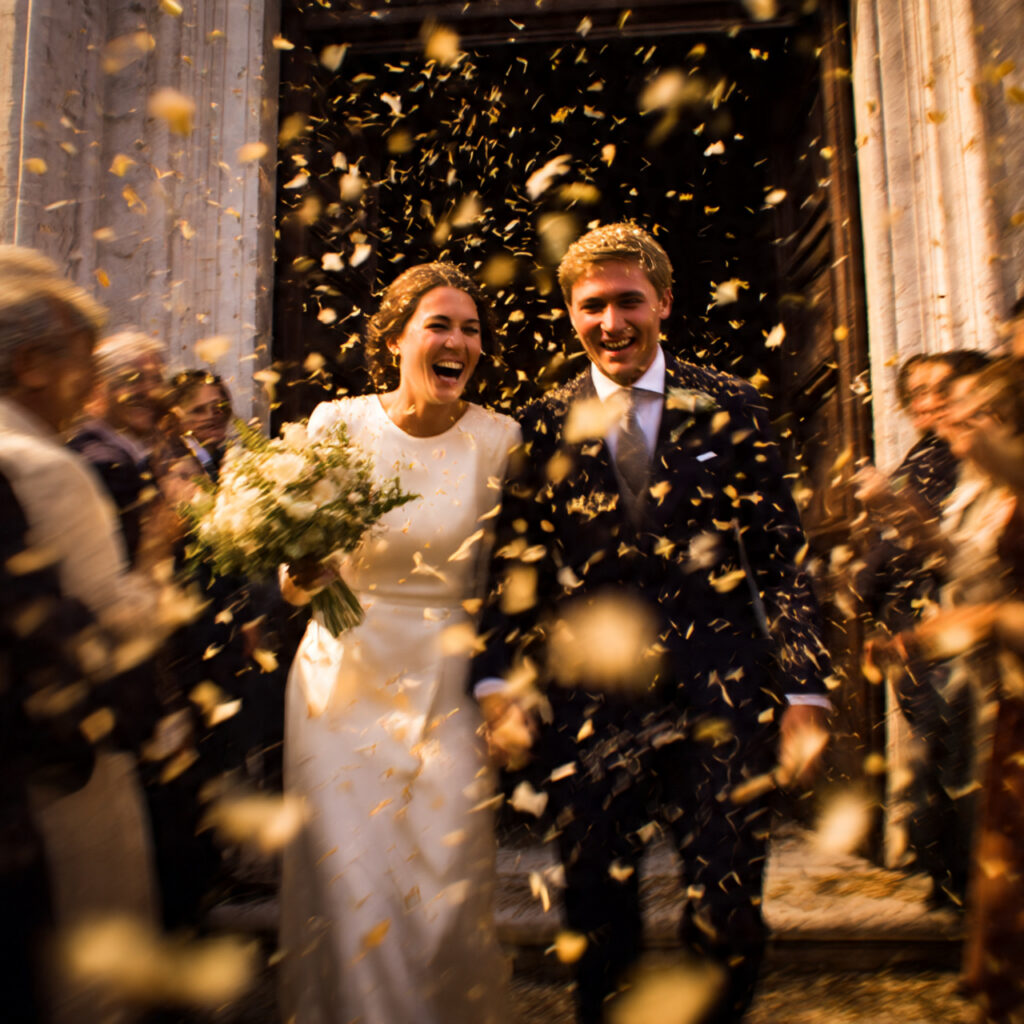
Guests traditionally throw rice as the newlyweds leave the church, symbolizing fertility, prosperity, and abundance. Modern couples sometimes replace rice with petals or eco-friendly confetti, but the spirit remains. This joyful act is one of the most recognizable Italian wedding traditions, marking the first steps into married life under a shower of blessings.
The Wedding Car Parade

After the ceremony, a parade of honking cars drives through town, announcing the marriage to everyone nearby. It’s loud, lively, and festive. This motorcade reflects communal joy and has become a contemporary twist on older Italian wedding traditions where carriages and musicians led the way through village streets.
The Bridal Bouquet

The groom traditionally buys the bridal bouquet and delivers it to the bride on the morning of the wedding. It’s his final gift to her as a fiancé. This act blends romance with ritual, forming a meaningful part of Italian wedding traditions that highlight the groom’s role in the ceremonial day.
Wedding Bells and Church Music
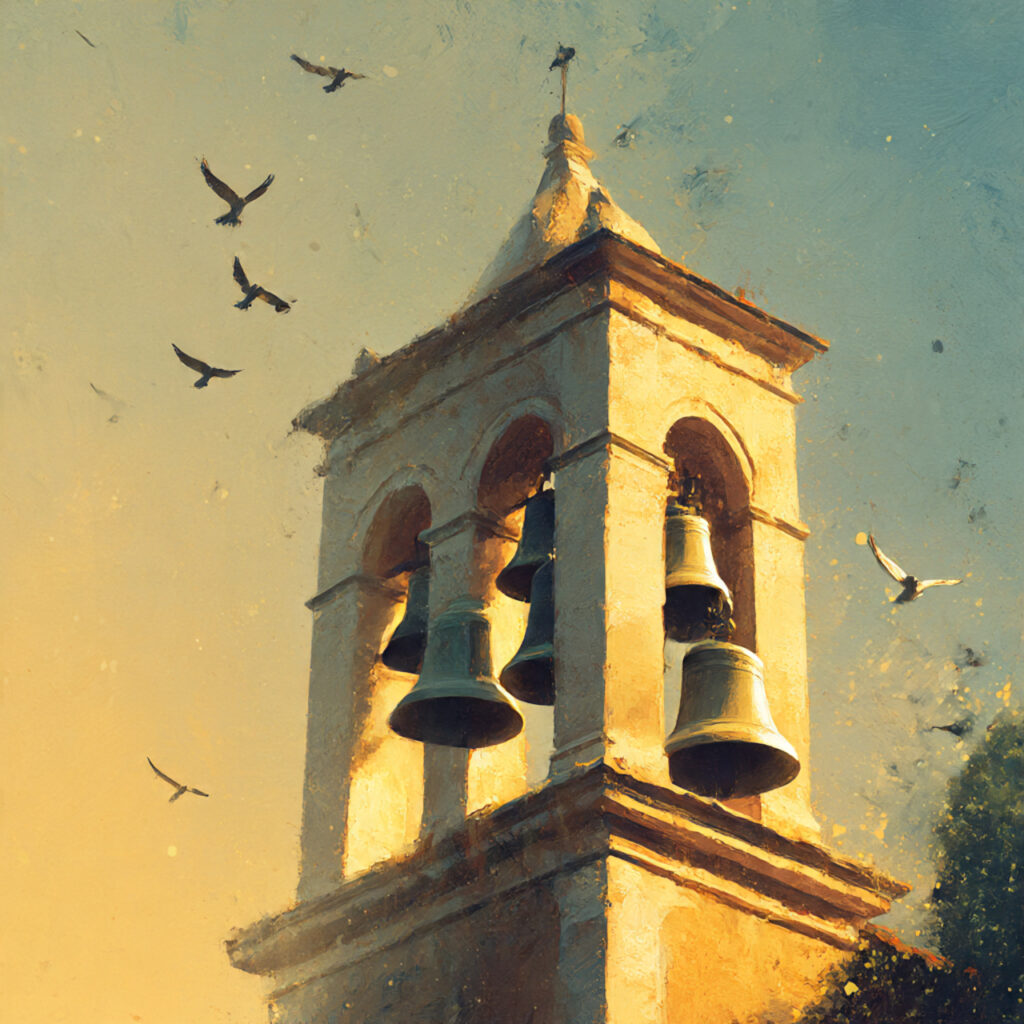
Church bells ring loudly as the couple exits the ceremony, a sound believed to ward off evil spirits and spread happiness. Bells are symbolic in many religious contexts, and in Italian wedding traditions, they carry the added meaning of announcing union to the heavens and the community alike.
The Reception Entrance
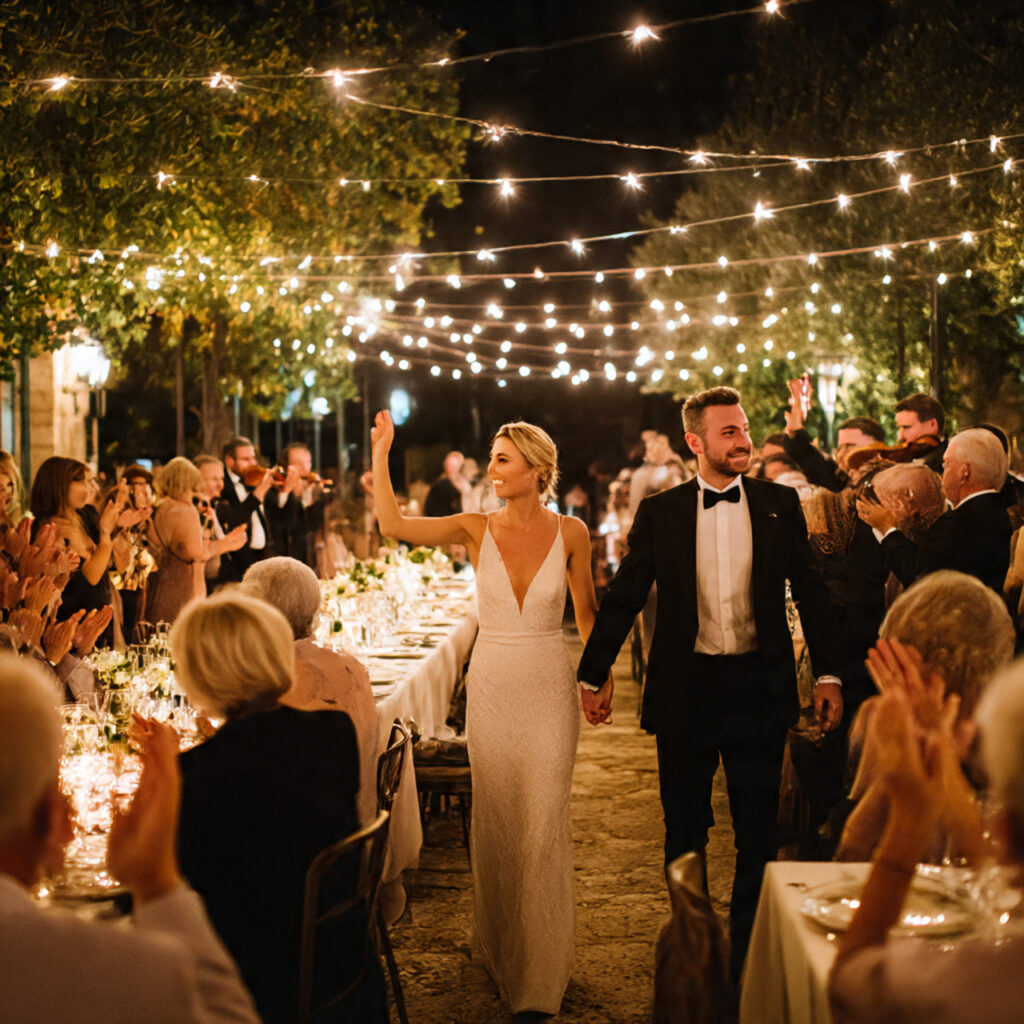
The couple’s grand entrance at the reception is often met with applause, music, and cheers. Some couples enter to a tarantella tune, reflecting regional folk dances. This entrance is more than a formality — it’s the start of communal celebration. Italian wedding traditions put emphasis on this moment as the shift from solemn ceremony to joyous feast.
The Wedding Feast
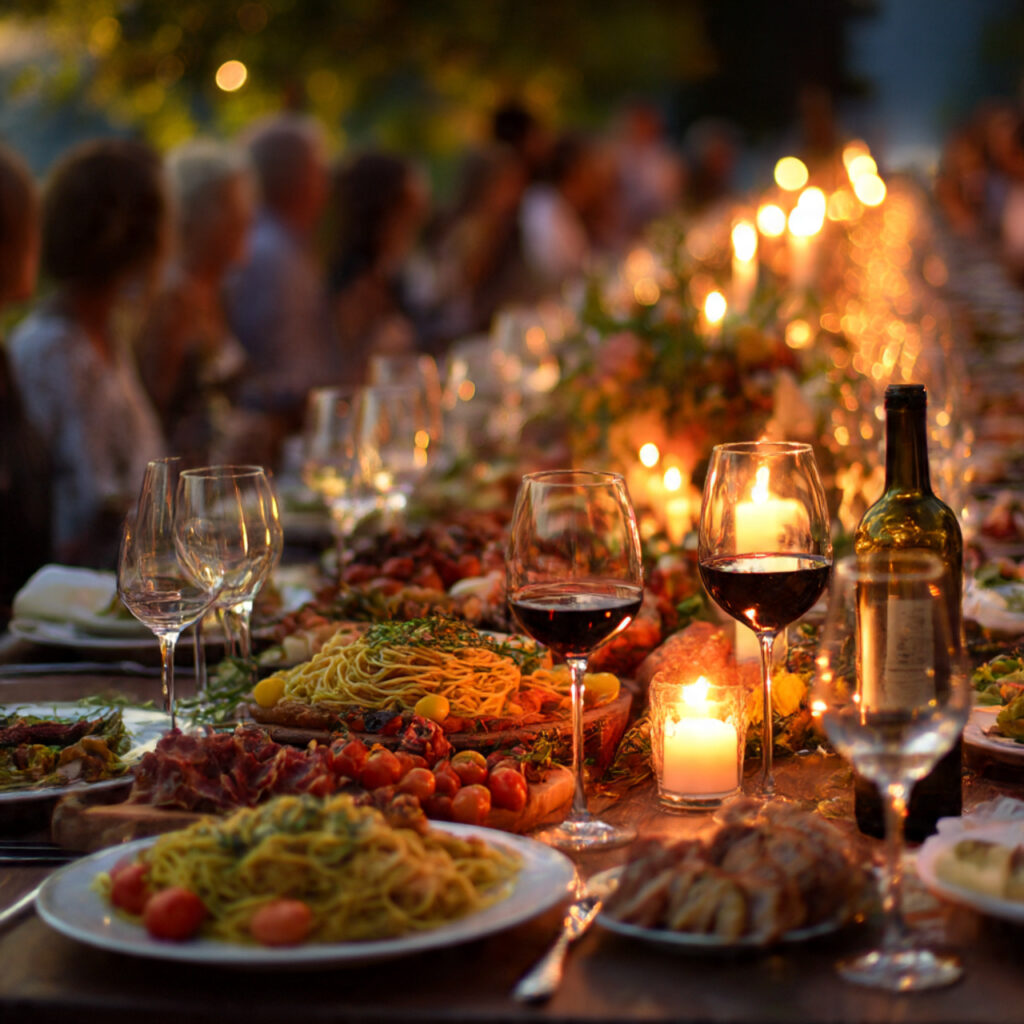
Italian wedding receptions are known for their lavish multi-course meals, sometimes lasting for hours. Guests enjoy antipasti, pasta, meat or fish courses, and dessert, often paired with local wines. Food is central to Italian culture, and wedding banquets reflect abundance and hospitality. This is one of the richest Italian wedding traditions, where families express generosity and celebration through cuisine.
Folk Music and Dancing

In many regions, traditional folk music sets the tone for the reception. Dances like the tarantella encourage guests to join in, creating an energetic atmosphere. Folk performers may lead dances that symbolize joy and fertility. Incorporating folk traditions remains an enduring part of Italian wedding traditions, blending history with festivity.
The Cake Cutting Ceremony

The cutting of the wedding cake is one of the most anticipated moments of the reception. In Italy, couples often use a ceremonial knife and cut the cake together, symbolizing unity and shared responsibility. Guests gather to watch, cameras flash, and the first slice is usually offered to each other. This act holds a special place in Italian wedding traditions as it marks the couple’s first joint task as husband and wife.
The Wedding Cake Style

Italian wedding cakes traditionally feature multiple layers of sponge soaked in liqueur, filled with cream or custard, and decorated simply with fresh flowers or sugared almonds. Unlike towering fondant cakes elsewhere, the focus is on taste and symbolism. Serving this cake connects modern celebrations to older Italian wedding traditions that value shared food over spectacle.
The Bomboniere
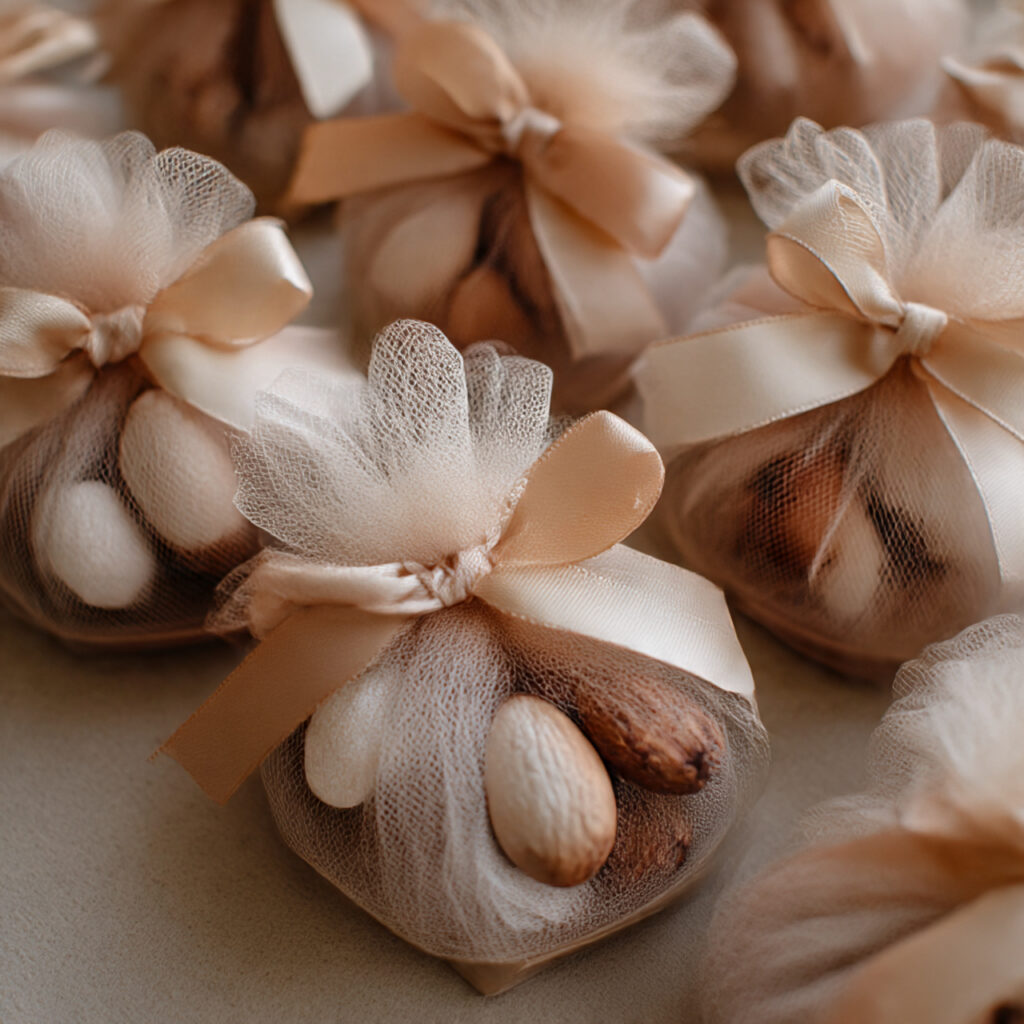
Bomboniere are small wedding favors given to guests, typically containing sugared almonds wrapped in tulle. The number of almonds — usually five — represents health, wealth, happiness, fertility, and long life. This custom is a cornerstone of Italian wedding traditions, showing gratitude to guests while offering symbolic blessings.
La Serenata

In some regions, the groom serenades the bride the night before the wedding, often with the help of friends and musicians. She appears at her window, and the performance turns into a small celebration. This romantic gesture, called la serenata, remains a cherished part of Italian wedding traditions, blending love, music, and community.
Regional Costumes
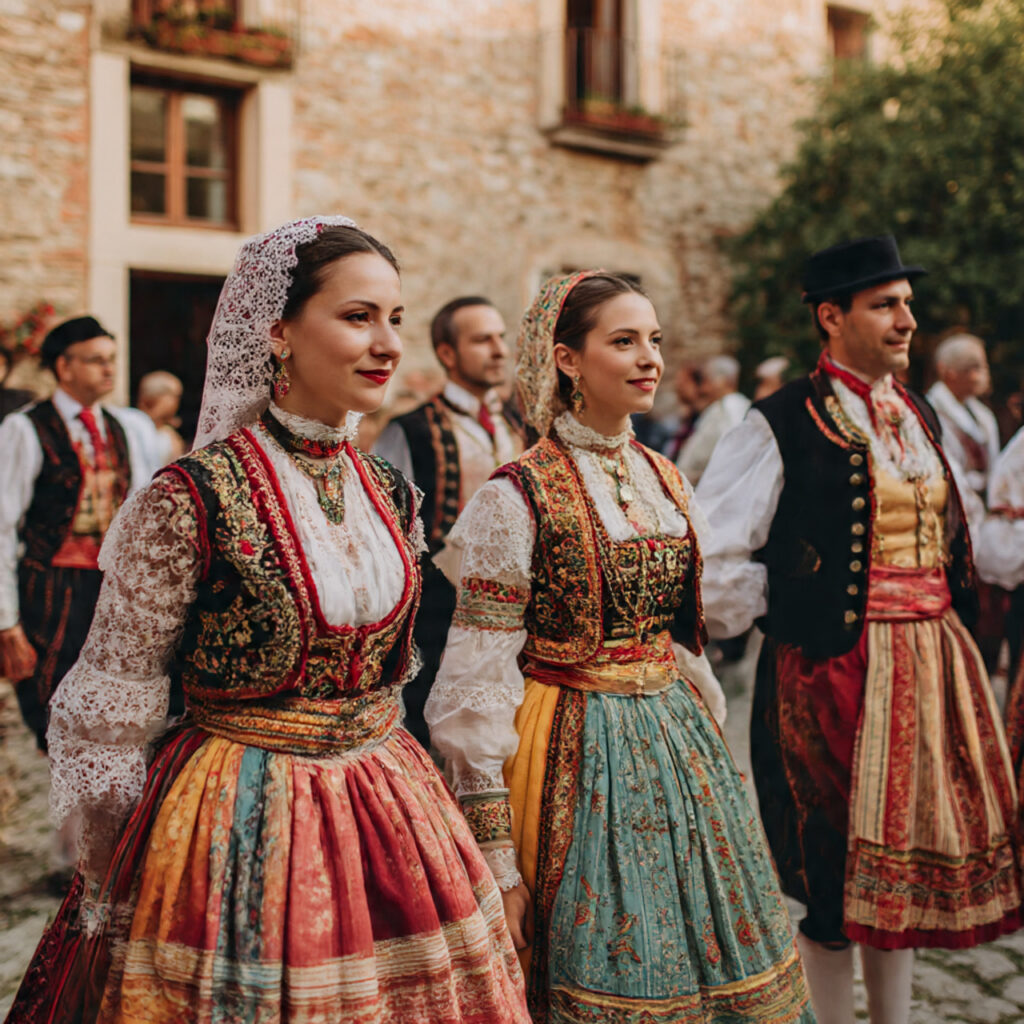
While most brides wear white today, some rural regions still embrace traditional costumes for pre-wedding events or folk dances. These outfits reflect centuries of local heritage, embroidery, and craftsmanship. Wearing or displaying regional dress during the festivities connects couples to their cultural roots — a meaningful gesture in Italian wedding traditions.
The Bridal Veil and Accessories

In older times, veils were believed to protect brides from evil spirits. Today, Italian brides often wear veils as a nod to both faith and fashion. Lace mantillas or cathedral-length veils are popular choices. Accessories such as heirloom jewelry, gold crosses, or family rosaries also play a role, linking personal history to broader Italian wedding traditions.
The Wedding Rings

Italian couples traditionally wear their wedding bands on the fourth finger of the left hand, symbolizing the “vena amoris,” or the vein of love. In some southern regions, couples may wear the engagement ring on the right hand and switch it during the ceremony. Exchanging rings is central to Italian wedding traditions, representing eternal unity and sacred promise.
Throwing the Garter and Bouquet

Modern weddings sometimes incorporate playful elements like bouquet or garter tossing. In Italy, these customs were adapted more recently, blending imported trends with local flair. The bouquet toss often happens after dinner, while the garter toss involves male guests. Including these playful moments shows how Italian wedding traditions can absorb new ideas while keeping their festive spirit intact.
The Wedding Toast
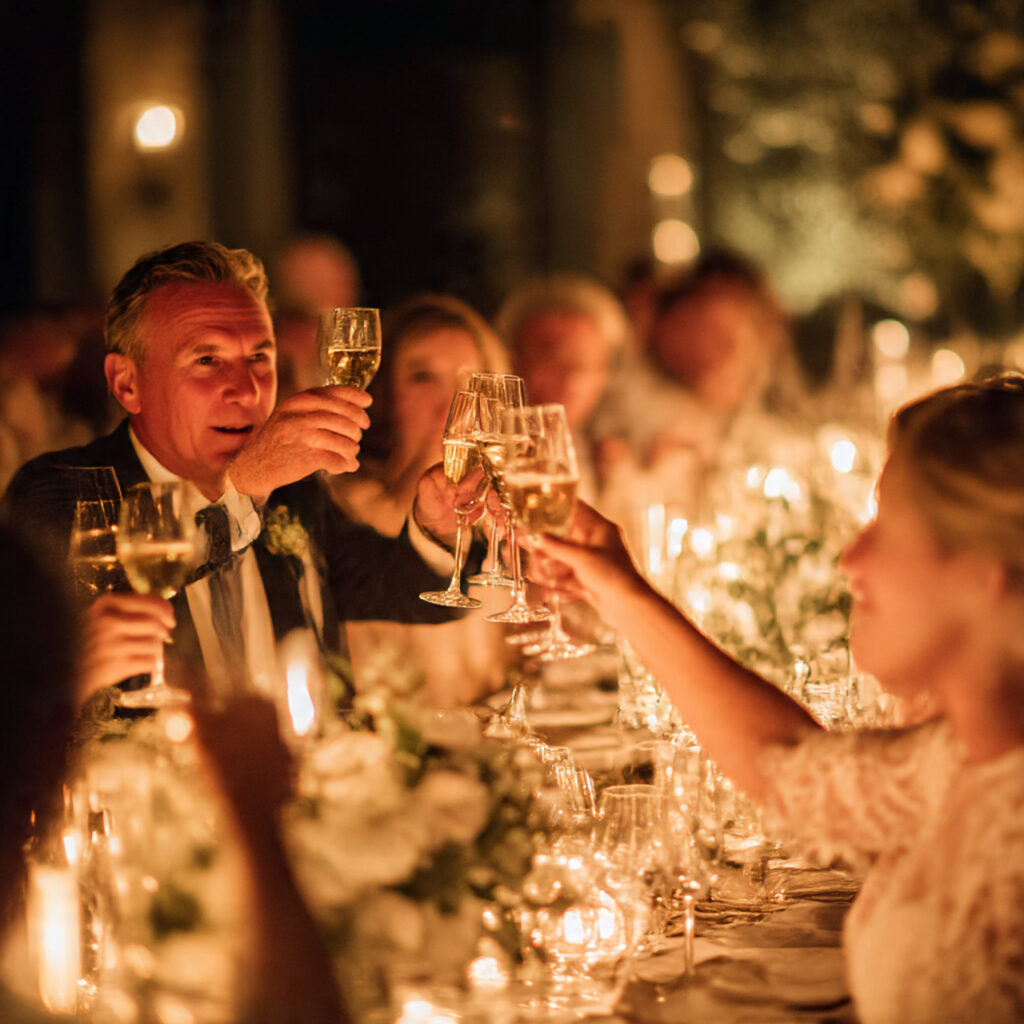
A formal toast, often led by the father of the bride or a close relative, honors the couple and thanks guests. In some places, everyone raises a glass of local sparkling wine or prosecco. Toasting is both ceremonial and communal, a reminder of how Italian wedding traditions celebrate shared joy through collective gestures.
The Departure of the Couple

When the festivities draw to a close, the newlyweds traditionally slip away quietly, leaving guests to continue celebrating. In some regions, friends might play pranks on the couple’s new home, a light-hearted way of wishing them luck. The departure marks the end of public festivities, an understated but meaningful point in Italian wedding traditions.
The Honeymoon Journey

In the past, newlyweds often traveled to nearby towns for short honeymoons, called “viaggi di nozze.” Today, couples might plan extended international trips, but the symbolic meaning remains: a honeymoon represents their first steps into married life away from the family circle. This journey has long been woven into Italian wedding traditions as a transition from community to intimacy.
Anniversary Celebrations
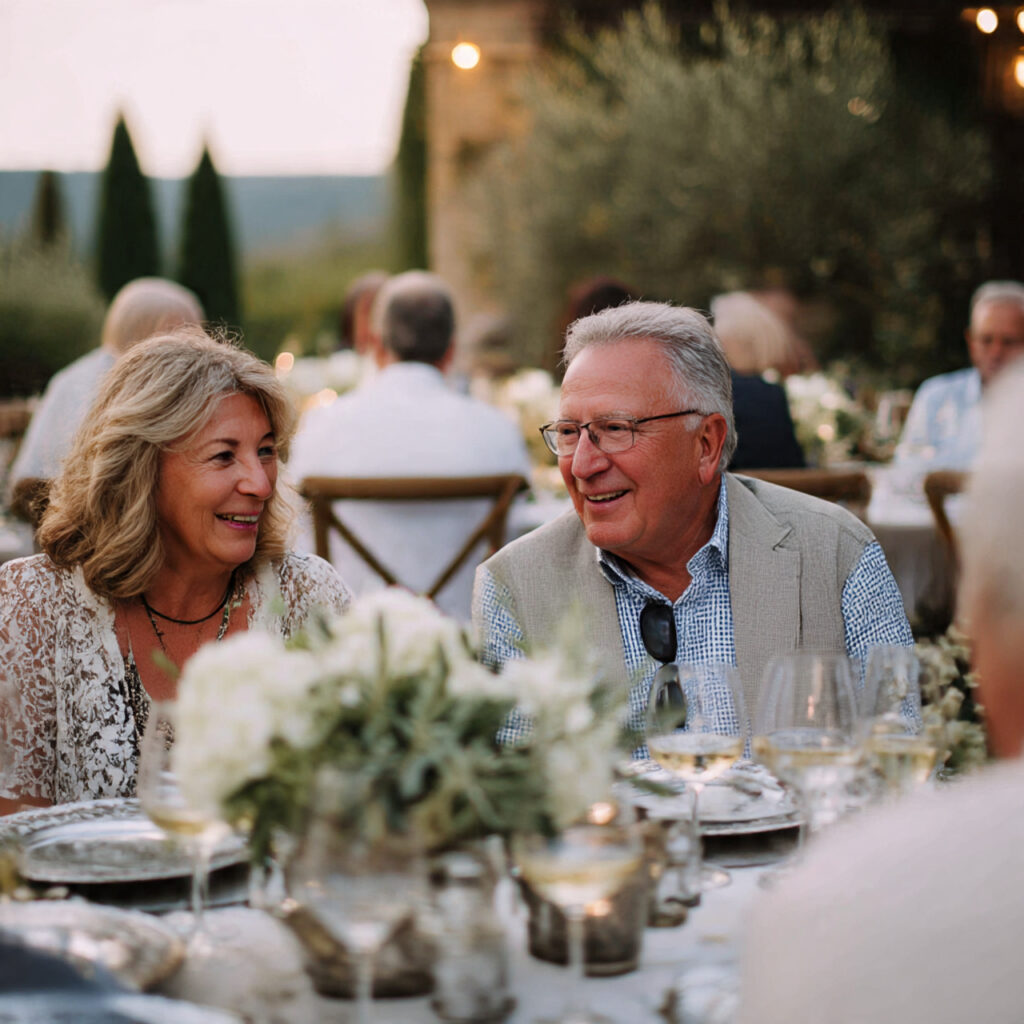
Many Italian couples celebrate significant anniversaries with gatherings that mirror their wedding day. A 25th anniversary might involve a church blessing, while a 50th anniversary often includes a large family feast. These milestones highlight the longevity of marriage and the continued role of family in Italian wedding traditions.
Community Participation

One hallmark of Italian weddings is the active involvement of the entire community. Neighbors decorate streets, musicians perform, and friends assist with preparations. Even in modern settings, this collective participation remains strong, emphasizing that marriage is not only a union between two people but between families and communities — a defining aspect of Italian wedding traditions.
Modern Adaptations
While many couples honor ancient customs, they also adapt them to contemporary lifestyles. Eco-friendly confetti, destination ceremonies, smaller receptions, and personalized bomboniere are common updates. These changes prove that Italian wedding traditions are living practices, capable of evolving while maintaining their cultural essence.
Frequently Asked Questions
What is the most important Italian wedding tradition?
The wedding feast is often considered the heart of the celebration. It brings families and friends together to share food, wine, and joy, embodying the Italian values of community and hospitality.
Do all regions in Italy follow the same wedding customs?
No. Traditions vary widely between northern, central, and southern regions. Some emphasize religious rituals, others focus on music, costumes, or community parades. Regional diversity is part of what makes Italian wedding traditions so rich.
Is rice still thrown at Italian weddings?
Yes, but many couples now use petals or eco-friendly alternatives. The act symbolizes fertility and good fortune, and remains a joyful moment outside churches or ceremony venues.
Do modern Italian weddings still include serenades and folk dances?
Many couples incorporate serenades and folk dances as a nod to their heritage, especially in rural areas. Others choose more contemporary entertainment, but these customs remain beloved parts of Italian wedding traditions.
Are bomboniere still given to guests?
Absolutely. Bomboniere are a cherished keepsake. Even in modern weddings, couples carefully select favors that combine tradition with personal style, ensuring guests receive a meaningful token.
Conclusion
Italian wedding traditions embody a balance between reverence for the past and celebration of the present. They emphasize family, community, and shared joy, weaving together rituals that give weddings their distinctive character. From the engagement blessing to the final toast, each step reflects values that have endured for generations.
Couples continue to reinterpret these customs in modern ways, ensuring they remain vibrant and meaningful. Whether held in a small village or a bustling city, Italian weddings carry the weight of history while celebrating the beauty of love in the present.

